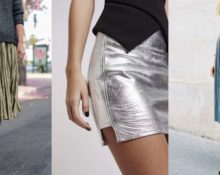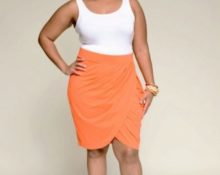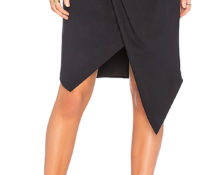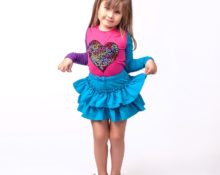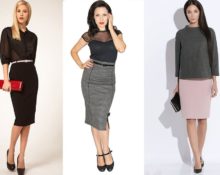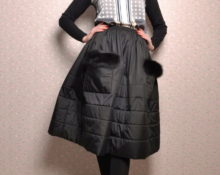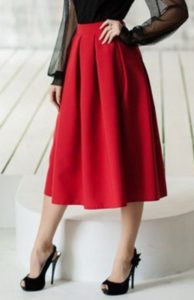 This type of clothing has long been considered both male and female. Over the years, skirts became more complex and elegant, and the weaker sex practically won the right to wear them from men. The modern world is more built on convenience and practicality. And although ladies mostly wear trousers, a skirt remains the most feminine and exciting item in the wardrobe of any representative of the fairer sex.
This type of clothing has long been considered both male and female. Over the years, skirts became more complex and elegant, and the weaker sex practically won the right to wear them from men. The modern world is more built on convenience and practicality. And although ladies mostly wear trousers, a skirt remains the most feminine and exciting item in the wardrobe of any representative of the fairer sex.
The history of skirts
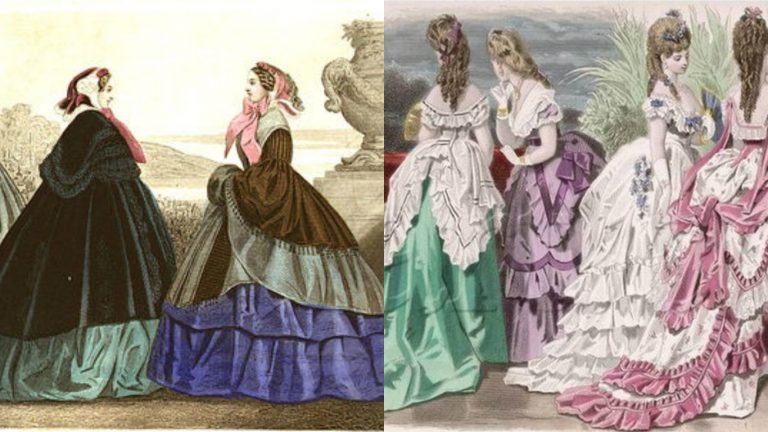
Many thousands of years ago, ancient man made the first clothes from herbs and the skins of wild animals. It was a cruel necessity; it was necessary to shelter the body from rain and cold. At the same time, the first loincloths appeared - distant predecessors of modern skirts. With the invention of fabric, the process of dressing was simplified. You could simply wrap a piece of material around yourself, pin it, and the garment was ready. Until the 10th century, men's and women's clothing differed little, and starting from the next century, the strong half of humanity began to gradually lose ground in relation to skirts.
Types of skirts in ancient times
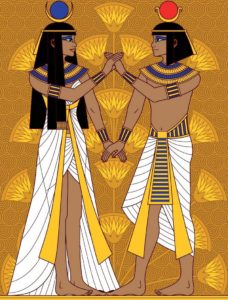 Ancient Egyptians wore skhenti - a strip of fabric that was wrapped around the hips and secured with a cord. The Assyrians already have simple long shirts - kandi, but both rich and poor could also attach a piece of material on top like a skirt. The Greeks had a himation. The figure was draped with a piece of fabric, and one of the ends went down over the shoulder to the chest. Ancient Chinese They wore not only robes, women's clothing consisted of a jacket and a long skirt, similar to European ones. This costume was called ishan.
Ancient Egyptians wore skhenti - a strip of fabric that was wrapped around the hips and secured with a cord. The Assyrians already have simple long shirts - kandi, but both rich and poor could also attach a piece of material on top like a skirt. The Greeks had a himation. The figure was draped with a piece of fabric, and one of the ends went down over the shoulder to the chest. Ancient Chinese They wore not only robes, women's clothing consisted of a jacket and a long skirt, similar to European ones. This costume was called ishan.
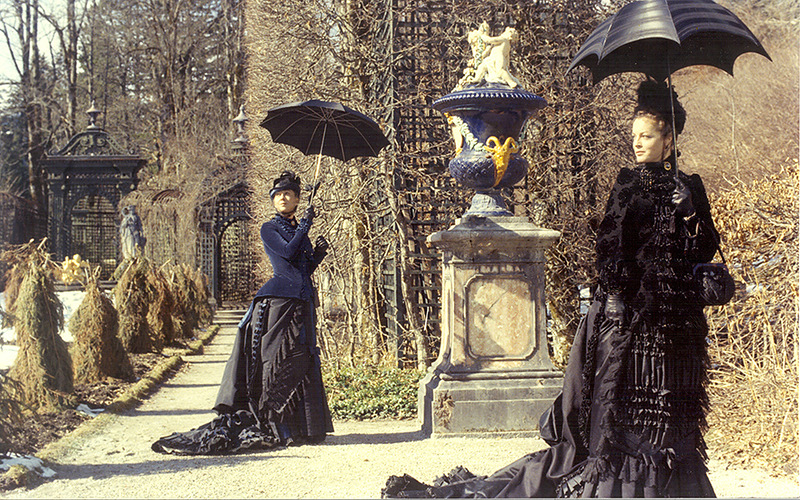 Over the following centuries, the shape and length of the skirt has undergone incredible changes. Fashionistas wore long trains that trailed behind their beauties with colorful tails. In the 16th century, models on frames came into fashion. True, this structure was so wide that the lady could only pass through the door sideways. In the following centuries, there was a clear decrease in volume, and linen was used instead of a frame. crinolines. Clothes stopped being heavy and gave women the opportunity to feel lighter and more confident. The end of the 19th century brought fashion for bustle - a kind of pad that was tied below the waist at the back, so that the female figure began to resemble a duck.
Over the following centuries, the shape and length of the skirt has undergone incredible changes. Fashionistas wore long trains that trailed behind their beauties with colorful tails. In the 16th century, models on frames came into fashion. True, this structure was so wide that the lady could only pass through the door sideways. In the following centuries, there was a clear decrease in volume, and linen was used instead of a frame. crinolines. Clothes stopped being heavy and gave women the opportunity to feel lighter and more confident. The end of the 19th century brought fashion for bustle - a kind of pad that was tied below the waist at the back, so that the female figure began to resemble a duck.
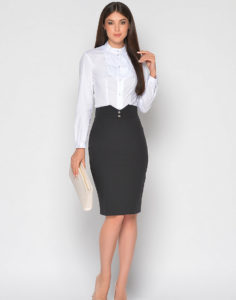 The twentieth century broke all the canons and foundations. Skirts became shorter, they could be worn without petticoats, and in the middle of the century minis made a victorious march around the world. In recent decades, fashion has changed very often. New trends are introduced by famous designers, popular artists and singers, and even musical trends. So, Christian Dior created an elegant pencil skirt, perfectly emphasizing the figure. A rock and roll introduced a wide and airy model, from under which white underwear peeked out.
The twentieth century broke all the canons and foundations. Skirts became shorter, they could be worn without petticoats, and in the middle of the century minis made a victorious march around the world. In recent decades, fashion has changed very often. New trends are introduced by famous designers, popular artists and singers, and even musical trends. So, Christian Dior created an elegant pencil skirt, perfectly emphasizing the figure. A rock and roll introduced a wide and airy model, from under which white underwear peeked out.
Types of skirts and their names
Even offhand, any fashionista can name a dozen different models of skirts. Mini and midi, narrow and wide, simple and with a complex cut - the range is huge. The main thing is to find your own among such a large selection, successfully emphasizing the advantages of the figure and masking its imperfections.
Types of skirts by cut and silhouette
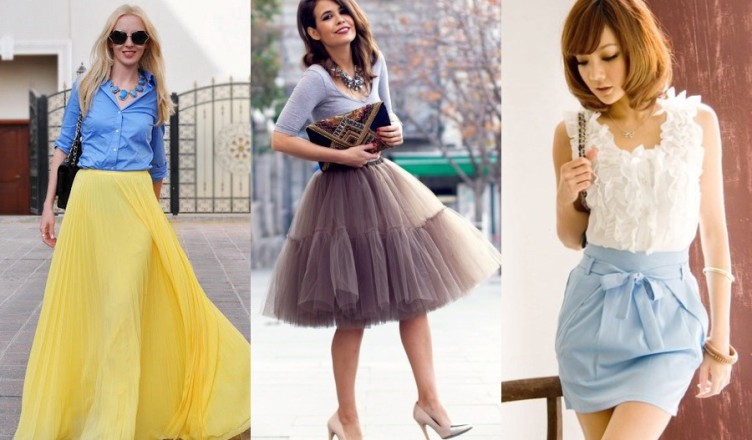 To understand the intricacy of all types, silhouettes, cuts and styles, you will have to turn to a school geometry course. A silhouette is a contour image of an object. This item will be a skirt. Let's look at it from all sides and highlight the following silhouettes:
To understand the intricacy of all types, silhouettes, cuts and styles, you will have to turn to a school geometry course. A silhouette is a contour image of an object. This item will be a skirt. Let's look at it from all sides and highlight the following silhouettes:
- Straight. The width of such models on the hips and lower part is almost the same. This is a standard style, previously often used for sewing various uniforms.
- Conical. Accordingly, the top and bottom of the product differ in width. There are two options here. Narrowed downwards like a pencil model and widened like flares, sun, godet and others.
From the point of view of geometry, the cut is the part of the body for which the clothing is made, laid out or unfolded on the surface. To do this, measurements are taken and patterns or patterns are made. It is the cut that allows you to create the ideal model for a specific figure. What it will be: a tulip, a multi-blade, a bell or something else depends on preference, body shape, fashion and other factors. According to the type of cut, skirts with flounces, pleated or gathered, sun or half-sun, year, with a wrap and fasteners, with drapery and asymmetrical, with undercuts, with a low or high waist and many others are distinguished.
Types of skirts by length
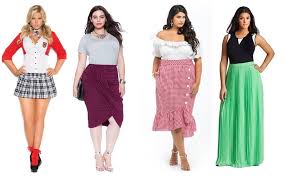 Modern women are incredibly lucky.The requirement to wear clothes of a certain length has long lost its relevance, and no one is condemned anymore for a piece of leg peeking out from under the hem. A properly chosen skirt can make your legs visually longer. Just remember that the bottom edge seems to cut them horizontally. If this line is at the widest point, then the legs look fuller; at the narrowest point, the legs appear longer and slimmer.
Modern women are incredibly lucky.The requirement to wear clothes of a certain length has long lost its relevance, and no one is condemned anymore for a piece of leg peeking out from under the hem. A properly chosen skirt can make your legs visually longer. Just remember that the bottom edge seems to cut them horizontally. If this line is at the widest point, then the legs look fuller; at the narrowest point, the legs appear longer and slimmer.
The length could be like this:
- Maxi. The product is sewn to the ankle or to the floor. This universal length suits a woman of any build, hides what is unnecessary and emphasizes what is needed. Today, such an outfit can be worn not only to a special event, wedding or to a restaurant. On a simple summer day, it would be appropriate to wear a cotton blouse and a long skirt made of flowing fabric.
- Midi. This is the name of the length of the product, fluctuating between “a little below the knee” and “above the ankle”. It is believed that midi suits only tall and slender women. But by experimenting with the length and style, you can find the perfect option for almost any figure. For example, an A-line silhouette and a model with pleats and gathers from the waist also look good in a midi.
 Up to the knees. This length is also called classic or French. It's a decent, if slightly conservative, option for a suit that can be worn under any circumstances. Suitable for women of different ages and with different body types, it looks elegant and noble.
Up to the knees. This length is also called classic or French. It's a decent, if slightly conservative, option for a suit that can be worn under any circumstances. Suitable for women of different ages and with different body types, it looks elegant and noble.- Mini. An incredibly feminine and current trend for the last few decades, which emphasizes female attractiveness and sexuality. The length of such products is one palm above the knee. Models look good on slender girls with beautiful legs.Among the fashionable styles are skirts with wrap and slits, straight and pleated, plain and with prints.
- Micro. The shortest model, in some cases not covering the buttocks. Clothes of this length look provocative and revealing. And therefore, only the bravest and most desperate girls with beautiful figures without any flaws can afford it. Usually chosen for summer holidays, sports, and some special occasions.
We choose the length based on the characteristics of our figure.
Types of skirts by style
Fashion designers highlight several dozen current skirt styles. Every year brings new ones, and some leave, only to appear at fashion shows again in 10–20 years. Let's highlight the relevant ones.
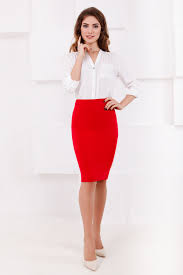 Pencil. Narrow model that fits tightly around the hips. The length of the product varies from midi to mini. For ease of movement it may have a slot or cut.
Pencil. Narrow model that fits tightly around the hips. The length of the product varies from midi to mini. For ease of movement it may have a slot or cut.
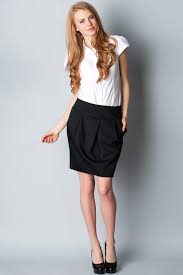 Tulip. Its shape resembles the cup of a flower, which is why it got its name. It has pleats at the waist and is somewhat narrowed at the bottom. Some models have a bud-like scent.
Tulip. Its shape resembles the cup of a flower, which is why it got its name. It has pleats at the waist and is somewhat narrowed at the bottom. Some models have a bud-like scent.
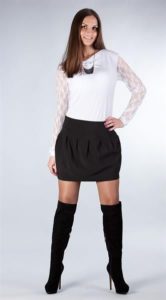 Barrel (cylinder). The model has extra volume in the middle, which is removed at the waist and bottom, making it look like a wooden cooper's product.
Barrel (cylinder). The model has extra volume in the middle, which is removed at the waist and bottom, making it look like a wooden cooper's product.
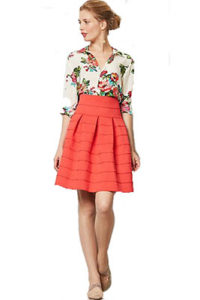 Bell. In this model, reminiscent of a forest bell in shape, the narrow waist expands downwards, the length ranges from the middle of the knee and slightly above.
Bell. In this model, reminiscent of a forest bell in shape, the narrow waist expands downwards, the length ranges from the middle of the knee and slightly above.
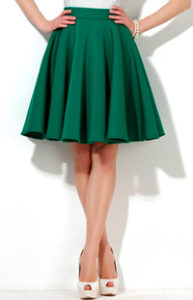 Sun. The name comes from the cut of the product. The skirt is made in the form of a circle, in the center of which there is an opening for the waist.
Sun. The name comes from the cut of the product. The skirt is made in the form of a circle, in the center of which there is an opening for the waist.
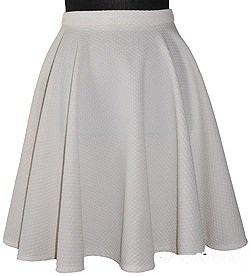 Blade. The model is based on several wedges that are stitched together. Their number depends on desire and imagination: four, six, eight, sixteen. As an option - a year skirt, the wedges of which widen downwards.
Blade. The model is based on several wedges that are stitched together. Their number depends on desire and imagination: four, six, eight, sixteen. As an option - a year skirt, the wedges of which widen downwards.
In the fold. When cutting such a product, folds, large or small, are placed at the waist. They can be one-sided or counter-shaped, bow-shaped, fan-shaped, identical or asymmetrical.
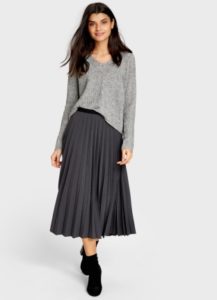 Pleated and corrugated. This is a skirt with narrow folds that appear as a result of treatment with a special chemical solution.
Pleated and corrugated. This is a skirt with narrow folds that appear as a result of treatment with a special chemical solution.
Multi-tiered. In such a work of design thought there are several tiers, which increase in width with length. It is sewn from rectangular strips of fabric.
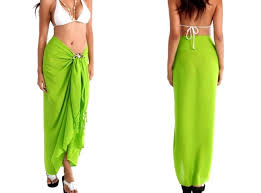 Sarong. The model resembles a scarf that is wrapped around the hips, following the example of the national clothing of residents of hot countries.
Sarong. The model resembles a scarf that is wrapped around the hips, following the example of the national clothing of residents of hot countries.
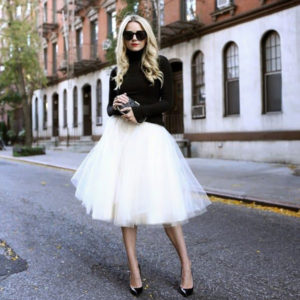 Pack. A very feminine option that came to the city streets from the stage. Made from several layers of lightweight transparent fabric.
Pack. A very feminine option that came to the city streets from the stage. Made from several layers of lightweight transparent fabric.
Types of skirts by additional elements
The usual straight model is somewhat boring, the designers thought. And now the skirts are decorated with various decorative elements.
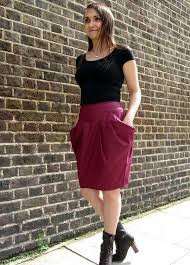 Pockets used to correct the figure or create an original image. They allow you to add volume to the product in the lower part or, conversely, visually narrow the hips. Depending on the cut, the pockets can be internal or patch pockets. They can be included in the side seam, yoke, relief. Often pockets play a decorative role, but at the same time, if necessary, you can put something there.
Pockets used to correct the figure or create an original image. They allow you to add volume to the product in the lower part or, conversely, visually narrow the hips. Depending on the cut, the pockets can be internal or patch pockets. They can be included in the side seam, yoke, relief. Often pockets play a decorative role, but at the same time, if necessary, you can put something there.
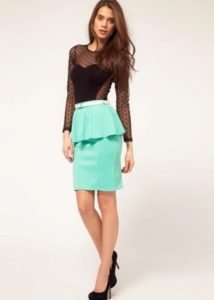 Basque came from men's fashion, where it decorated the vests of the stronger sex. It helps to visually lengthen the figure and make the waist narrower. The peplum is sewn to the top of the skirt at the waist. This decorative element fits both with a strict office dress code and with evening wear.
Basque came from men's fashion, where it decorated the vests of the stronger sex. It helps to visually lengthen the figure and make the waist narrower. The peplum is sewn to the top of the skirt at the waist. This decorative element fits both with a strict office dress code and with evening wear.
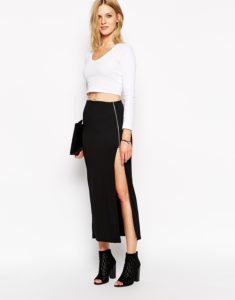 Cuts appeared along with tight skirts. It was difficult to move in such models; women were forced to mince in small steps.There was no talk of climbing the steps. Slits helped women become free from the shackles of strict designs, adding lightness and sexuality to the image.
Cuts appeared along with tight skirts. It was difficult to move in such models; women were forced to mince in small steps.There was no talk of climbing the steps. Slits helped women become free from the shackles of strict designs, adding lightness and sexuality to the image.
Buttons were sewn onto the skirt for different purposes. They are necessary for the option with a smell, but can also have a purely decorative appearance. Buttons are located on the waistband, pockets, front placket, and along the slit. A denim skirt with buttons down the center is already considered a classic.
Types of skirts according to the location of the cut
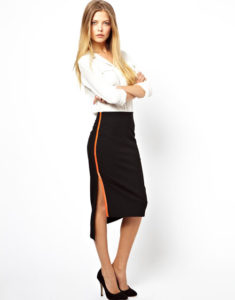 In some models, the cut is simply a vital necessity. Because it’s impossible to walk around in the same tight pencil skirt without it. The depth of the cut is made in accordance with your desire and purpose of the product. For example, in a standard office model it is from 5 to 15 cm, and a concert model can be “cut” almost to the waist.
In some models, the cut is simply a vital necessity. Because it’s impossible to walk around in the same tight pencil skirt without it. The depth of the cut is made in accordance with your desire and purpose of the product. For example, in a standard office model it is from 5 to 15 cm, and a concert model can be “cut” almost to the waist.
In recent years, fashion designers have provided their creations with a variety of cuts: modest, hidden between the folds and incredibly deep, revealing, original in the form of fringe and elegant in the side seams. There are various models of skirts with slits: wraparound, pleated, midi, maxi and even mini. Just remember that in tandem with such models you often need high-heeled shoes.
The classics of the genre are the following types of cuts:
 Behind. As fashionistas of yesteryear said, such a cut could mean one thing: “follow me.” And its depth was made in accordance with the standards and convenience when walking.
Behind. As fashionistas of yesteryear said, such a cut could mean one thing: “follow me.” And its depth was made in accordance with the standards and convenience when walking.- Side. A very interesting cut, often performed in the “pencil” model. In this case, a piquant detail is also necessary for normal movement. You can balance the look with a conservative top.
- Front. This model looks very sensual. The main thing is not to overdo it and maintain decorum.What looks playful on the red carpet at Cannes looks fake and vulgar in real life.
Each woman chooses which cut is preferable for herself. It all depends on the model of the skirt and legs. But it is worth remembering about the depth of the cut: more does not always mean better.
Tips on how to choose the perfect skirt model
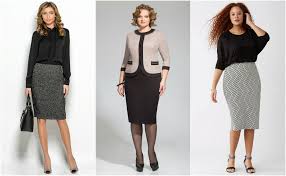 When choosing the ideal skirt for yourself, you should take into account three parameters: height, fullness, and body type.
When choosing the ideal skirt for yourself, you should take into account three parameters: height, fullness, and body type.
An organically sitting model can visually add a few centimeters to height or slightly reduce an overly tall figure. For example, tight-fitting styles that reach the middle of the knee and slightly below are suitable for petite women, while those that are too curvy and long will make the look too doll-like.
Fat or thin women are a very relative concept. Therefore, owners of curvy figures should not complete and hide their bodies under loose clothes. Strict straight models of skirts that beautifully emphasize the attractiveness of shapes are well suited for them. But too wide styles will make the silhouette more bulky. Minis with flared bottoms look great on thin representatives of the fairer sex. Decorative elements: flounces, frills - will add the necessary volume to the hips and make the image more feminine.
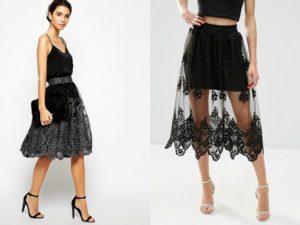 Knowing your body type will help you choose the right model. For example, for an apple-type body type, flared options, balloon and tulip models are suitable. A pear figure looks natural in a pencil skirt and A-line silhouette. These same options are also suitable for hourglass body types. The “rectangle” body type looks good in the trapezoid and sun (half-sun) models. With an “inverted triangle”, the winning option is pleated, tulip and models with a flared hem.
Knowing your body type will help you choose the right model. For example, for an apple-type body type, flared options, balloon and tulip models are suitable. A pear figure looks natural in a pencil skirt and A-line silhouette. These same options are also suitable for hourglass body types. The “rectangle” body type looks good in the trapezoid and sun (half-sun) models. With an “inverted triangle”, the winning option is pleated, tulip and models with a flared hem.
A skirt is one of the basic elements of a woman's wardrobe.It gives the figure grace and femininity. The main thing is to find your option among many others.


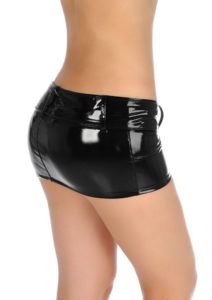 Up to the knees. This length is also called classic or French. It's a decent, if slightly conservative, option for a suit that can be worn under any circumstances. Suitable for women of different ages and with different body types, it looks elegant and noble.
Up to the knees. This length is also called classic or French. It's a decent, if slightly conservative, option for a suit that can be worn under any circumstances. Suitable for women of different ages and with different body types, it looks elegant and noble.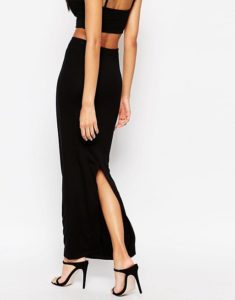 Behind. As fashionistas of yesteryear said, such a cut could mean one thing: “follow me.” And its depth was made in accordance with the standards and convenience when walking.
Behind. As fashionistas of yesteryear said, such a cut could mean one thing: “follow me.” And its depth was made in accordance with the standards and convenience when walking. 0
0